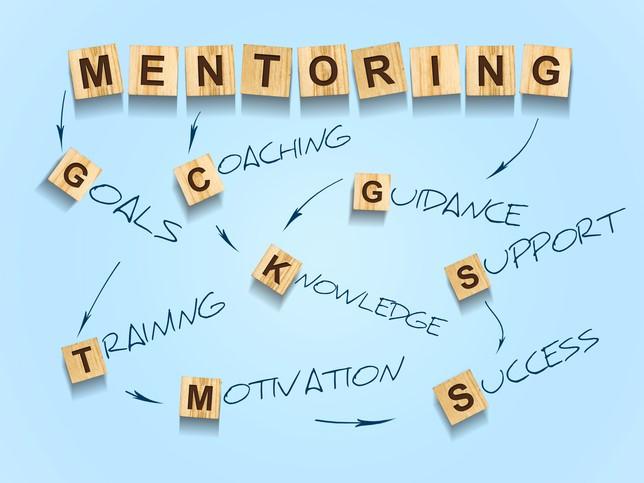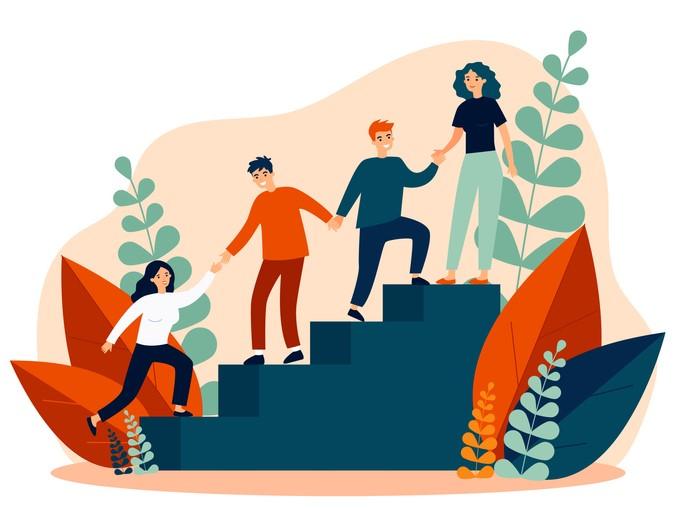When planned with care, reverse mentoring can build bridges across generational, gender and cultural divides and be transformative for mentors, mentees and even those outside the mentoring relationships.
Reverse mentoring disrupts “traditional” power dynamics and hierarchies such as when a senior person mentors a more junior person. In reverse, or reciprocal, mentoring, roles are reversed (mentor becomes mentee and vice versa) or removed to intentionally create a level playing field during conversations.
Mentors should have some difference(s) from their mentee which they explore (eg, identity characteristics) and mentees need a desire to learn, develop their practice and, ideally, the ability to influence the practice of others. Reverse mentoring challenges deficit narratives surrounding people who identify as under-represented within higher education as well as negative perceptions of those in positions of authority through reciprocal conversations.
- Resource collection: Champion inclusion on your campus
- How reverse mentoring helps co-create institutional knowledge
- Research supervision: working with the individual in front of you
To date, my work has involved students from across disciplines who identify as under-represented mentoring university senior leaders, personal tutors, teaching staff, student support staff, police officers and senior lawyers. I have co-designed reverse mentoring with students and legal professionals. Conversations have explored diversity and inclusion, belonging, community, well-being, mental health, personal tutoring, student safety and more. Schemes have focused on amplifying student voices and creating opportunities for their voices to influence institutional practice.
So why should you try it out too?
1. To create space and time for diverse voices to be heard. Reverse mentoring supports learning from diverse experiences to develop institutional culture and dismantle unhealthy norms that exist owing to titles, seniority or “it’s the way it’s always been” mentalities that pervade law and other high-pressured working environments. Through intentionally dismantling hierarchy, we are exposed to new ways of thinking and doing. We can experience “light-bulb moments” that change perceptions and influence actions.
2. To increase a sense of belonging and mattering. Creation of safe spaces and time for personalised and meaningful conversations between people who might not usually interact in this way signals that an institution cares about people as individuals. It challenges neoliberal rhetoric around students as numbers and staff as dispensable. It contributes to better understanding of one another, the self, the organisation and the sector. Conversations contribute to change not just for participants but for “the system” through follow-up actions, which will help others in the future. It offers a way to fight power from within, motivating staff and students who become part of a collective force for good and have something (the reverse mentoring group) within the institution they feel they belong and matter to.
3. To help students and staff be and feel human. It has been a repeated theme across my reverse mentoring work that these conversations, typically centred around under-representation, have a humanising effect. Both staff and students have found the experience cathartic – a rare opportunity to be open and honest with one another; to be human. Reverse mentoring allows us to practise authenticity, which feeds into teaching and research approaches and improves our relationships with others as we may become more willing to trust and to be ourselves.
4. For personal development. Reverse mentoring is a growth opportunity. There are many ways this might manifest but increased self-worth and confidence of mentors through being heard and using their under-represented characteristics as a positive force for change is the most significant I have witnessed. It is the primary reason I keep coming back to reverse mentoring and developing new iterations of it.
5. To build or strengthen allyship. Where diverse representation is lacking within an institution, for example, the staff diversity does not reflect student diversity, and relying on representation and role modelling to support students is problematic. Reverse mentoring conversations can build role model mentalities in mentees, enhancing allyship and activism. It enhances the prospects of all staff, regardless of personal background or identity, being skilled and caring enough to support students authentically – not because they personally understand what it feels like to be them, but because they listen, learn and take action based on their students’ lived experiences.
6. To expand networks. Many mentors and mentees reflect on improvement of other relationships because of the opportunity reverse mentoring gives them to open up with people in authority or people they wouldn’t usually speak to in such an honest manner. This creates a knock-on effect on interactions with peers, family and friends. When we dismantle hierarchy, “taboo” topics come to the fore. If you can build a community of practice among mentors and mentees by providing regular opportunities to unite, reflect and share, this also expands their networks as they recognise one another as new allies who all share a common aim: to make things better for others.
7. To have difficult conversations. It can be easy for us to bury our heads in the sand on diversity and inclusion issues and leave it for others. But this is work for all of us. Reverse mentoring conversations can expose mentees to stereotypes, biases and examples of discrimination and microaggression that they cannot meaningfully understand without hearing others’ lived experiences and learning the impact. One of my favourite TED talks by Luvvie Ajayi Jones encourages us to get “comfortable being uncomfortable”. Reverse mentoring is a true expression of this. When we sit with discomfort and explore why it makes us uncomfortable together, we start to catalyse change.
8. To harness the power of stories. There is so much out there to read, learn and engage with, it can be overwhelming. We might see things and have good intentions to act but then we get busy and something else takes priority. Really getting to know one individual, who may be very different from you, on a deeper level and hearing their stories is harder to forget. We think about that person next time we see someone acting non-inclusively and will be inclined to call them out, or next time we are involved in hiring, we will strive to make the process more inclusive. Those reminders change and affect our actions for the better.
Reverse mentoring is worth the hype, but it has to be carefully planned and supported. At its heart must be the experience and well-being of your mentors because, for all of the benefits discussed above and many more, they are exposing personal experiences, emotions and challenges. If we don’t respect and protect that, we should not be engaging in these conversations at all. My next post will contain practical tips and challenges to consider when running your own reverse mentoring scheme.
Rachael O’Connor is an associate professor in the School of Law at the University of Leeds.
Read more about Rachael’s work on reverse mentoring:
Challenging the ‘traditional’: how ‘micro-communities’ can bring about big change
If you would like advice and insight from academics and university staff delivered direct to your inbox each week, sign up for the Campus newsletter.




comment